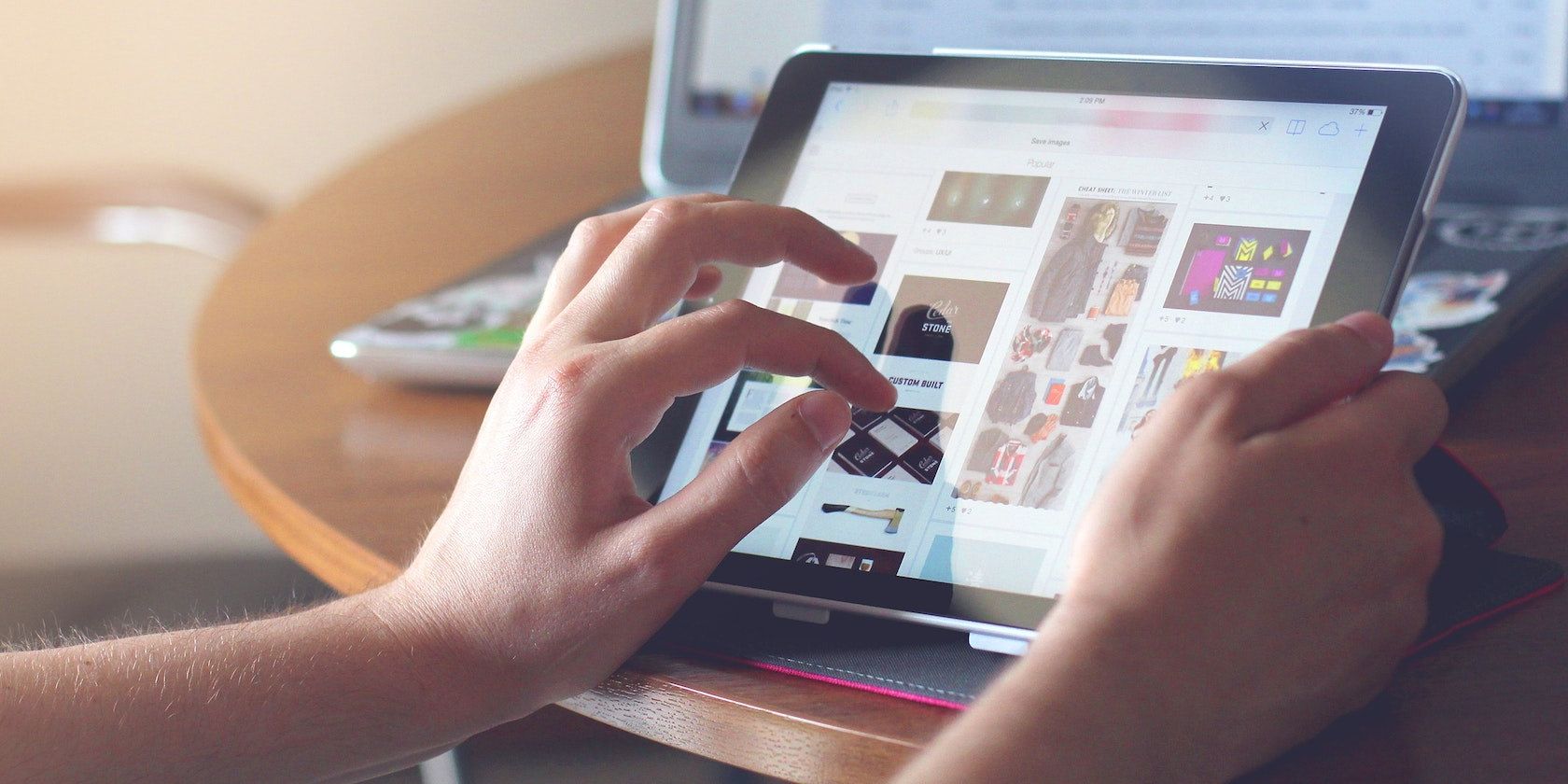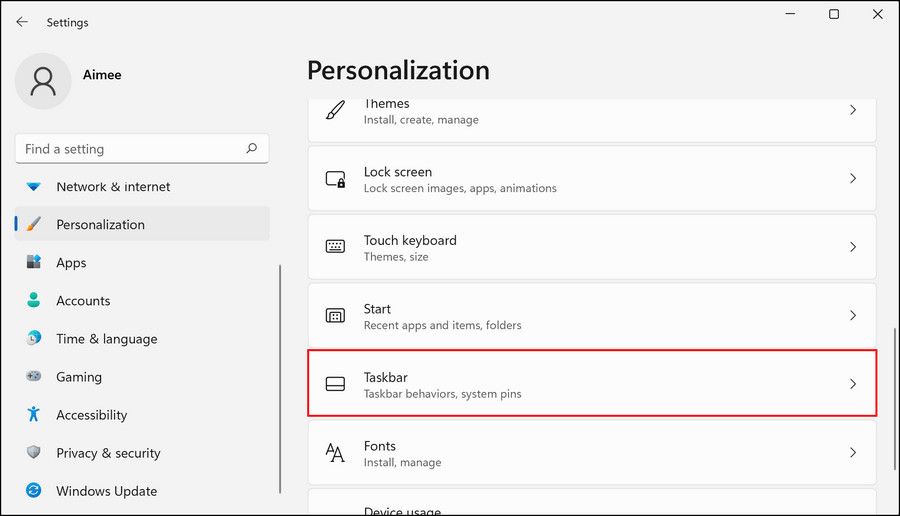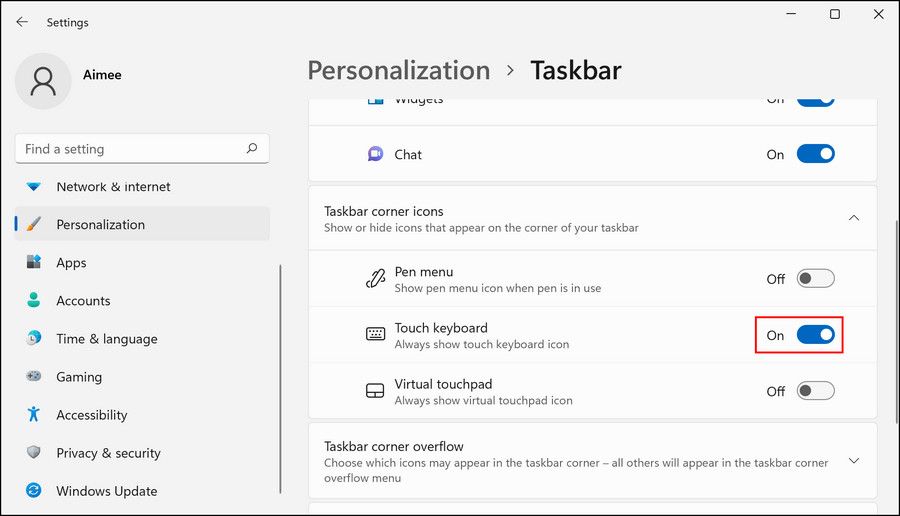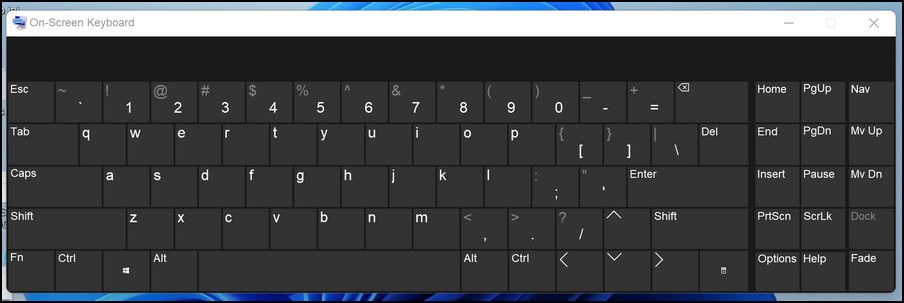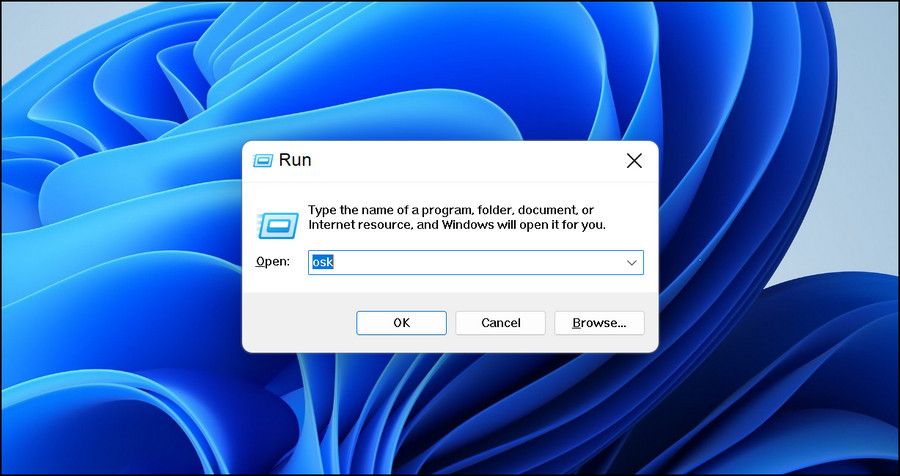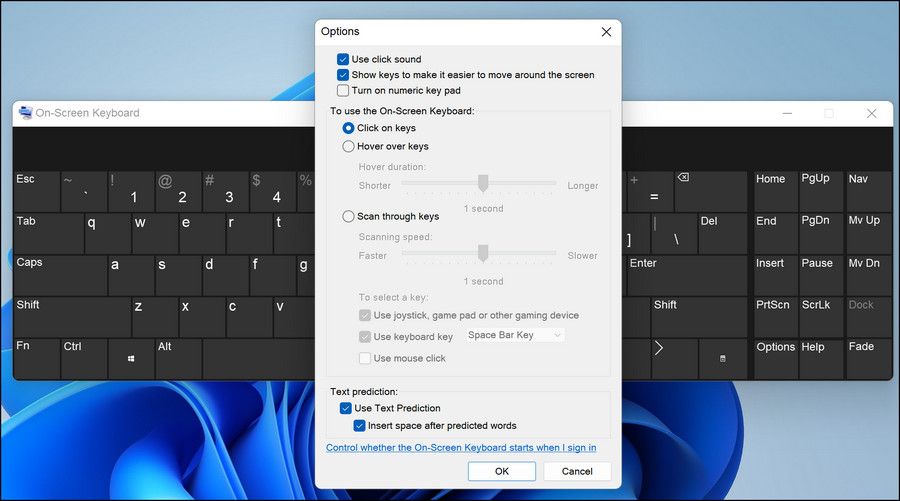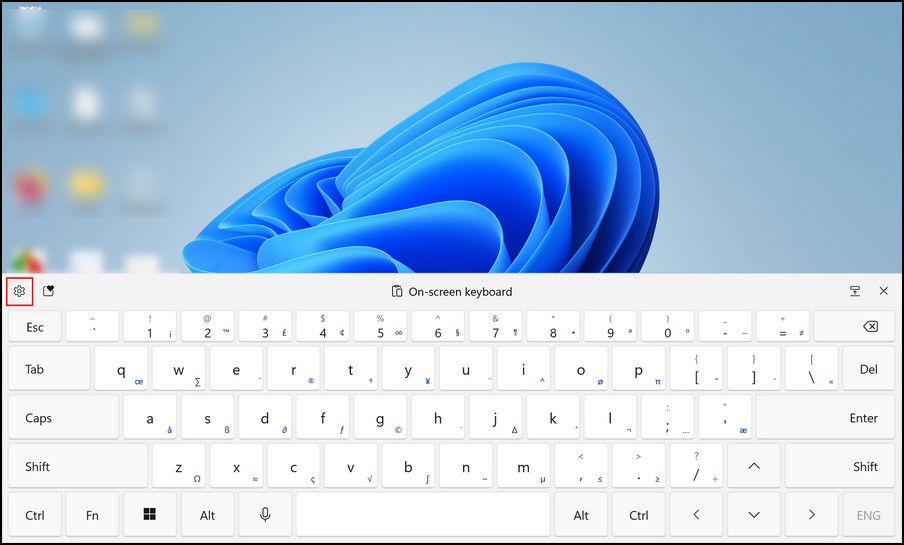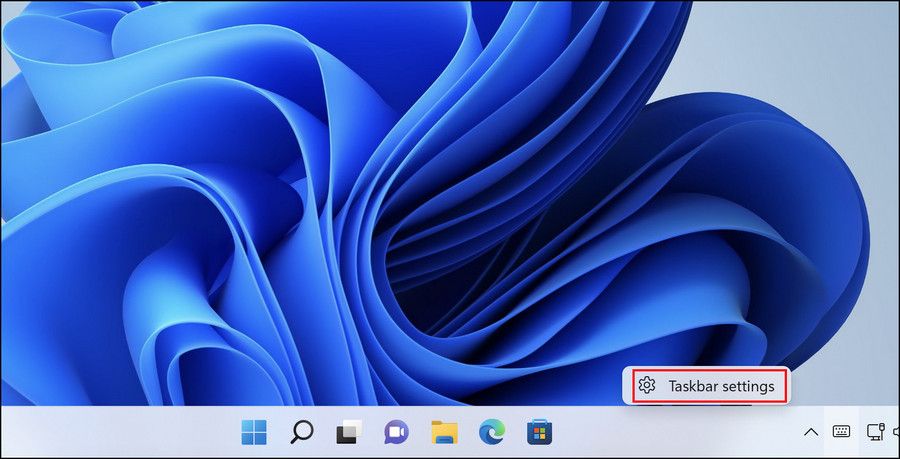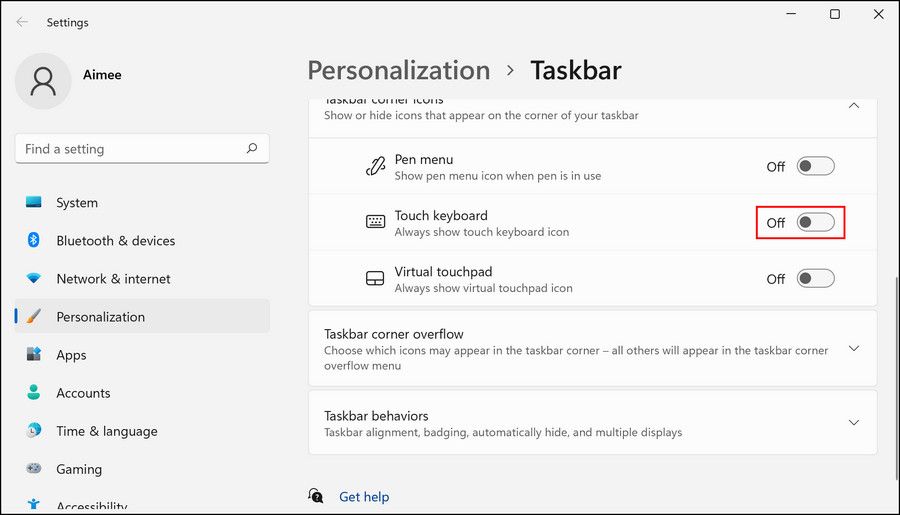Although physical keyboards are still the power-typer and gamer's tool of choice on-screen keyboards can be useful when the physical keyboard stops working, or you are just too tired to press the keys.
In Windows 11, you can enable touch and the on-screen keyboard in a slightly different way than in Windows 10. In this guide, we'll show you how to enable your touch keyboard, as well as how to get the most out of it with a few tricks and tips.
How to Enable the Touch Keyboard on Windows 11
The easiest way of enabling the touch keyboard on Windows 11 is via the Settings app.
Here is how you can proceed:
- Press Win + I together to open Windows Settings.
- Choose Personalization from the left pane.
-
In the right pane, scroll down to find the Taskbar option and click on it.
-
Now, enable the toggle for Touch keyboard in the Taskbar corner icons section.
Doing so will always display the touch keyboard icon on your taskbar, which you can simply click to launch the on-screen keyboard.
The Different Methods of Launching the On-Screen Keyboard on Windows 11
There are also several other ways of launching the on-screen keyboard. However, in contrast to the default touch keyboard, this keyboard will be floating, allowing you to move it around on the screen.
Below are listed different ways of launching the on-screen keyboard:
1. Use the On-Screen Keyboard Keyboard Shortcut
Several Windows services and features can be launched using keyboard shortcuts that are set by default.
To launch the on-screen keyboard, press Ctrl + Win + O keys together. Once the keyboard is launched, you can adjust its placement according to your preferences.
2. Open the Run Dialog
You can also launch the on-screen keyboard by launching Run. First, press Win + R together. In the following dialog, type "osk" in the text field and click Enter.
This should launch the keyboard successfully.
3. Use Windows Search
You can launch the on-screen keyboard via Windows search in the same way you launch other apps.
Simply open the Windows Search bar with "On-screen keyboard" in the search bar and click Open under the appropriate result.
How to Get the Most Out of the Touch Keyboard
Once you have enabled the touch keyboard, you can personalize it to your liking.
To get started, simply launch the keyboard and click on the Options button. If you are using the on-screen keyboard, then you will find the Options button on the right side of the keyboard.
Once clicked, you can customize features like the clicking sounds, text prediction, hover duration, and scanning speed.
If you are using the touch keyboard, then click on the gear icon located in the top-left. Here, you can customize features like the keyboard layout, handwriting, themes, and size of the keyboard.
For instance, if you want to change the theme of the keyboard, you can choose one from the 17 options available. In the same window, you can adjust the overall size of the keyboard, as well as the size of the keys individually.
You can also change the language of the keyboard and its regional format by heading over to the Typing settings. In case you do not like the default on-screen keyboard on Windows, head over to our guide on the best virtual keyboards for Windows to explore more options.
How to Disable the Touch Keyboard Again
In case you no longer want to use the keyboard, it's best to turn it off again. If you leave its icon on the taskbar, it can lead to accidental clicks which can get annoying
Here is how to disable the touch keyboard:
-
Right-click on your taskbar and click on Taskbar settings.
-
Turn the toggle off for Touch keyboard.
That's it; you should no longer see the touch keyboard icon in your taskbar.
Get the Most Out of the Windows Touch Keyboard
Virtual keyboards may not be as convenient as physical keyboards, but they do have their own advantages. Did you know, for instance, that typing confidential information such as bank account details on a touch keyboard is less risky than on a physical keyboard? This is because malicious websites can record your keystrokes on a physical keyboard, allowing them to determine what information you entered!

